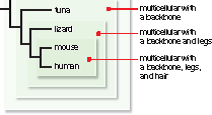Photosynthetic pigments in bacteria are located in the:
A. nuclei.
B. plasma membrane.
C. chloroplasts.
D. cell wall.
E. plasmids.
B. plasma membrane.
You might also like to view...
Most vegetable oils are:
a. liquid at room temperature and saturated b. unsaturated and solid at room temperature c. found only in animals d. complex carbohydrates e. liquid at room temperature and unsaturated
Assume a neuron receives EPSPs and IPSPs from several adjacent neurons. How might that neuron's
threshold potential be reached, causing it to produce its own action potential?
a. if IPSPs outnumber EPSPs b. temporal summation c. spatial summation d. temporal and spatial summation e. if IPSPs equal EPSPs
Active genes in eukaryotic cells are associated with
A. heterochromatin. B. methylated RNA and histones. C. DNA with many methyl groups. D. euchromatin.

A. The mouse and lizard would have more similar DNA sequences than the mouse and human. B. The human and lizard would have more similar DNA sequences than the human and mouse. C. The mouse and human would share more DNA sequences than the mouse and tuna. D. The tuna and lizard would share more DNA sequences than the human and lizard. E. The tuna and lizard would share less DNA sequences than the human and mouse.